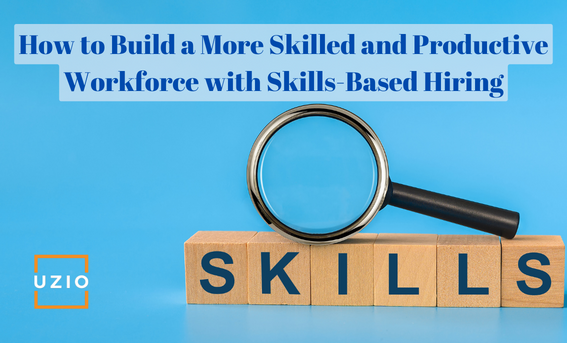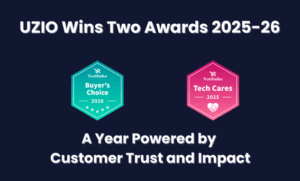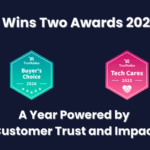
Skills-Based Hiring – How to Develop Your In House Talent
Quick links
-
The Changing Landscape of Skills-Based Hiring
-
The Skills Gap Challenge
-
Bridging the Gap: An HR Plan for In-House Training
-
Some Additional Tips
-
Key Takeaways
1. The Changing Landscape of Skills-Based Hiring
The workforce is undergoing a seismic shift as more companies opt for skills-based hiring instead of traditional degree requirements. A recent survey by ZipRecruiter found that 45% of respondents have dropped degree prerequisites for specific roles, and 72% prioritize skills over certificates and degrees. Industry leaders such as Condoleezza Rice, Satya Nadella, and others stress the importance of skills-based hiring as an equitable, efficient alternative to traditional hiring methods. The U.S. Chamber of Commerce also supports this by saying 95% of executives and HR heads find that non-traditional candidates perform as well, if not better than, degree holders.
2. The Skills Gap Challenge
However, the adoption of skills-based hiring has brought its set of challenges. Employers report a significant skills gap, struggling to find candidates with key skills like time management, professionalism, and critical thinking. About a quarter of employers find it hard to fill roles due to this gap, impacting both large and small businesses.
Here are some of the most common challenges with skills-based hiring:
- Identifying the right skills. The first step in skills-based hiring is to identify the skills that are essential for the job. This can be difficult, especially for complex or specialized roles.
- Assessing skills accurately. Once you have identified the right skills, you need to find a way to assess candidates accurately and objectively. This can be difficult, especially for soft skills such as communication and teamwork.
- Overcoming bias. Skills-based hiring is designed to reduce bias, but it is not entirely immune to it. For example, unconscious bias can influence how you assess candidates or how you interpret their responses to questions.
- Finding qualified candidates. In some industries, there is a shortage of skilled workers. This can make it difficult to find qualified candidates, especially for highly specialized roles.
- Changing the mindset of hiring managers. Many hiring managers are used to evaluating candidates based on their education and work experience. It can be difficult to change their mindset and convince them to focus on skills instead.
Despite these challenges, skills-based hiring is a valuable tool that can help organizations to hire the best candidates for the job. By taking the time to identify the right skills, assess candidates accurately, and overcome bias, organizations can overcome the challenges of skills-based hiring and reap the benefits of a more skilled and productive workforce.
3. Bridging the Gap: An HR plan for in-house training
To tackle this challenge, organizations should invest in comprehensive in-house training programs aimed at equipping their employees with the skills that are most in demand.
Step 1: Skill Assessment- The first step involves identifying the critical skills gaps within the organization. Conduct a thorough audit to understand where the disconnect lies between available skills and job requirements.
Step 2: Curriculum Development- Develop a curriculum focusing on the most lacking skills. Whether it’s time management, professionalism, or critical thinking, ensure the program is tailored to meet these specific needs.
Step 3: Utilize Existing Resources- Before bringing in external trainers or materials, assess the resources already available in-house. Senior employees or managers could conduct workshops or training sessions, thereby cutting costs and utilizing internal expertise.
Step 4: Blended Learning- Combine traditional classroom-based training with online courses and on-the-job training. This approach offers flexibility and caters to different learning styles.
Step 5: Monitoring and Feedback- Constant monitoring is essential for the program’s success. Use regular assessments and feedback mechanisms to gauge the effectiveness of the training.
Step 6: Update and Adapt- The business landscape is ever-changing, and skills that are relevant today might be obsolete tomorrow. The training program should be dynamic and should adapt to the evolving skill requirements.
Recommended Reading: Biggest pain point with Payroll and HR software
4. Some Additional Tips
Here are some additional tips for overcoming the challenges of skills-based hiring:
- Use data to identify the right skills. Analyze your job postings and performance reviews to identify the skills that are most important for success in your organization.
- Use a variety of assessment methods. No single assessment method is perfect. Use a variety of assessment methods, such as skills tests, work samples, and behavioral interviews, to get a complete picture of each candidate’s skills and abilities.
- Be aware of your own biases. Everyone has biases. Be aware of your own biases and take steps to mitigate them. For example, use blind resumes to remove unconscious bias from the hiring process.
- Partner with educational institutions and industry groups. Educational institutions and industry groups can help you to find qualified candidates for your open positions.
- Educate hiring managers about the benefits of skills-based hiring. Help hiring managers to understand the benefits of skills-based hiring and how to implement it effectively.
5. Key Takeaways
Skills-based hiring is a valuable tool that can help organizations to hire the best candidates for the job, but it is important to be aware of the challenges and take steps to overcome them.
One of the biggest challenges is identifying the right skills for the job. This can be done by analyzing job postings and performance reviews to see what skills are most important for success in the organization.
Another challenge is assessing skills accurately and objectively. This can be done by using a variety of assessment methods, such as skills tests, work samples, and behavioral interviews.
It is also important to be aware of your own biases and take steps to mitigate them. For example, you can use blind resumes to remove unconscious bias from the hiring process.
Finally, it is important to partner with educational institutions and industry groups to find qualified candidates and educate hiring managers about the benefits of skills-based hiring.
By taking these steps, organizations can overcome the challenges of skills-based hiring and reap the benefits of a more skilled and productive workforce.
Get in touch with us for an expert-led demo to know more about UZIO all-in-one payroll software.





